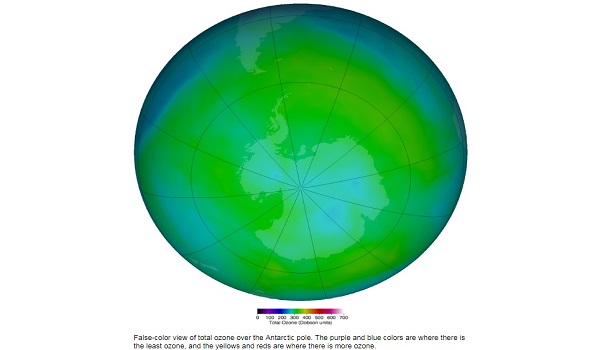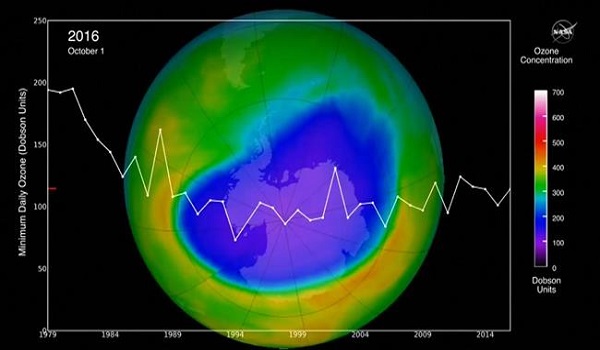The Global Effort To Repair The Ozone Hole Is Working, says NASA
The Global Effort To Repair The Ozone Hole Is Working
The hole in the ozone layer may be on the mend, a NASA study released.
Using measurements from their Aura satellite, NASA scientists have been studying chlorine levels within the Antarctic ozone hole over the last several years, and those levels have been decreasing.
According to NASA, this is "The first definitive evidence of the success of the Montreal Protocol on Substances that Deplete the Ozone Layer" - the 1987 Montreal Protocol bans chemicals that destroy the Earth's protective ozone layer, such as chlorofluorocarbons (CFCs) formerly used as refrigerants and propellants in aerosol sprays.

Dr.Susan Strahan, Atmospheric scientist said, "The Montreal Protocol has been a great success at banning the production of ozone-depleting substances. And we know this because we've been measuring those substances at the Earth's surface since the 1980s or even before, in some cases.
So before the Montreal Protocol, ozone-depleting substances at the surface were going up rapidly. Once the Protocol was signed and the regulations went into effect, we saw at the surface, levels of ozone-depleting substances going down."

The study revealed that there was about 20 percent less ozone depletion during the Antarctic winter than in 2005, the first year that chlorine measurements were taken by the Aura satellite.